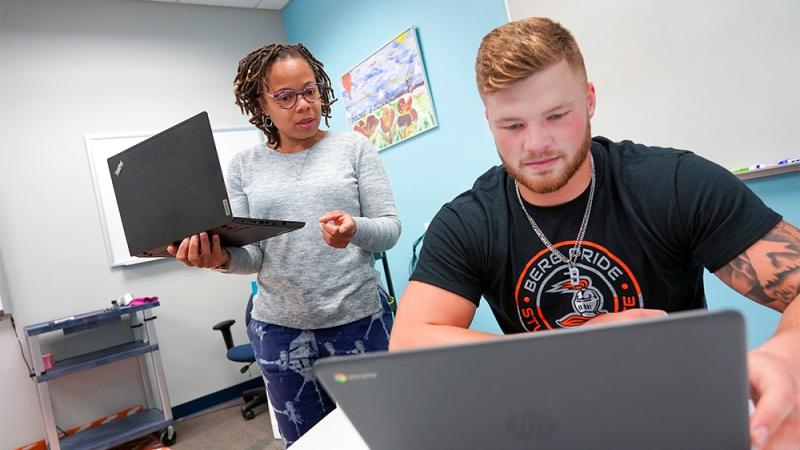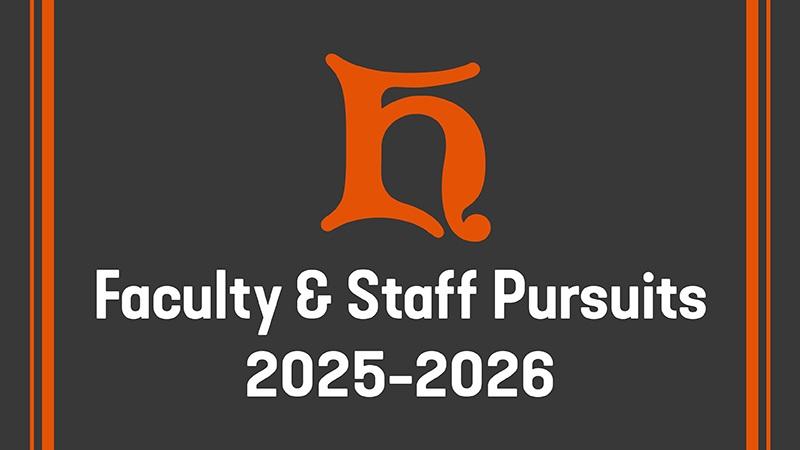'Berg's NCWQR plays pivotal role in algal bloom forecasting
Here comes another one, just like the other one. In the case of predicting the severity of the harmful algal bloom in western Lake Erie this summer, the forecast is a repeat of last year, and that is some good news for the region.
Dr. Laura Johnson, director of Heidelberg’s National Center for Water Quality Research, has again played a pivotal role in helping to formulate the forecast. Laura, along with research partners that include representatives of academia, governmental agencies and state research initiatives came together Wednesday at Stone Laboratory on Gibraltar Island, near Put-In-Bay, to explain the forecast and its implications.
A relatively dry spring led to lower phosphorus inputs compared to past years, Laura explained, leading the scientists to predict that this year’s bloom is expected to measure 3 out of 10 on the severity index. 2021’s bloom is expected to be among the smallest since 2011 and nearly the same as last year. An index score above 5 indicates more severe blooms.
“Both last year and this year, relatively mild rainfall in the spring has led to less phosphorus being carried into the lake, which means smaller blooms,” said Dr. Rick Stumpf, the lead scientist for the seasonal Lake Erie bloom forecast out of the National Oceanic and Atmospheric Administration’s National Center for Coastal Ocean Science.
The size of an algal bloom isn’t necessarily an indication of how toxic it is. For example, the toxins in a large bloom may not be as concentrated as in a smaller bloom. Each algal bloom is unique in terms of size, toxicity and impact on local communities.
The forecasts are important indicators for water-treatment plants, charter fishing boat captains, tourist-related businesses and others that depend on the water quality in the lake.
“Communities along Lake Erie rely upon clean, healthy water to support their community’s well-being and economic livelihoods,” said Paul Scholz, acting deputy director for NOAA’s National Ocean Service.
NCWQR’s role
The team at Heidelberg’s lab collect and analyze samples from the Maumee River, which are the primary input into the forecasting models, Laura explained. “Aside from reporting on the results from this year, typically people are also interested in how this year compares to the past trends and if we are seeing any major changes in phosphorus levels entering the lake.”
Several Lake Erie states, including Ohio, and Canada are committed to efforts to reduce phosphorus runoff into Lake Erie as part of Gov. Mike DeWine’s H2Ohip program to improve water quality. It’s too early to tell the impact of that effort, but Laura believes it is moving in the right direction. The initiative, in part, encourages better farming practices when using fertilizer and building and restoring wetlands along the lake shore.
Throughout the summer, as she has done for the past several years, Laura will update the water quality data for the end of the loading season on July 31. Moving forward, the lab will work with NOAA and others to continue the forecasts and improve models when appropriate.
“In general, we’ll continue to assess water quality from Ohio and Michigan rivers and examine these data for indications of improving conditions,” she said.
Value of scientific partnerships
The NCWQR has been tracking phosphorus in water samples since 1974 – the longest continuing set of data in the Great Lakes Region. Sharing their data is a two-way street. Collaboration with the lab’s partners on the harmful algal bloom forecasts “allows our work at the NCWQR to be shared at a level that would be difficult to achieve on our own,” Laura said.
Similarly, the length and detail of the water quality monitoring record that we have, especially for the Maumee River, is unprecedented and allows for researchers such as those at NOAA to apply their tools in ways that would be impossible in other locations, she added.
“We are constantly seeking out new collaborations and ways to examine and use the data we’ve collected.”
Science is the most successful, Laura said, when bringing together a variety of different disciplines and this success is exemplified by the collaborations the lab has had with Dr. Stumpf and everyone involved in the algal bloom forecasting.




